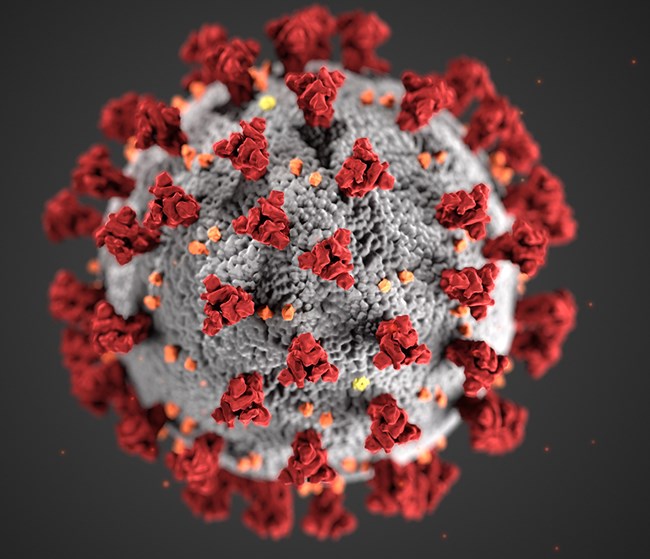A paper that sought to bring some math to the idea that the spread of COVID-19 could be tracked in human excrement has been retracted because of the authors submitted it to two different Elsevier journals on the same day — and because of some eyebrow-raising behavior by the alleged peer reviewers.
The first author of the article was Ernestine Atangana, a researcher in the Centre for Environmental Management at the University of the Free State in Bloemfontein.
The article, “Will the extraction of COVID-19 from wastewater help flatten the curve?,” appeared in Chemosphere in May — where it caught the eye of a researcher in the field (who did not want to be identified) who was struck by its sheer awfulness. (We should note that others have explored the same idea, and come to mixed conclusions.)
Among the more risible sections, the researcher told us, was this:
A scientific examination ought to be done to know how numerous times a recently tainted individual poo day by day or indeed week by week (of course, this might be another challenge owning, natural forms can vary from person excreta and numerous other components that might alter the patterns)
The researcher raised his concerns with the journal:
I reported the paper to the editors at Chemosphere earlier this year based solely on how terrible its content was. … To their credit, Elsevier did a full investigation and drew their own conclusions.
That inquiry turned up other oddities. According to the retraction notice:
The article is a duplicate of a paper that had been submitted to Science of the Total Environment (STOTEN) on the same day that it was submitted to Chemosphere, 6th October 2020. The manuscript was peer reviewed by both journals, with STOTEN first registering a ‘revise’ decision, followed by Chemosphere a few weeks later. Both journals invited the authors to submit a revised version, and the corresponding author did this. The revised version submitted to STOTEN was rejected; the one submitted to Chemosphere was accepted. Redundant publications overweigh the relative importance of published findings and distort the academic record of the authors. One of the conditions of submission of a paper for publication is therefore that authors declare explicitly that the paper has not been previously published and is not under consideration for publication elsewhere. As such this article represents a misuse of the scientific publishing system.
Furthermore, it was noted that despite each journal selecting different people to review the manuscript, significant sections contained in the reports of the reviewers of the manuscript submitted to STOTEN reappeared in the later reports received from the reviewers of the manuscript submitted to Chemosphere. All reviewers of the manuscript submitted to Chemosphere recommended ‘minor revision’ and delivered their reports on the same day. Additionally, sections of exactly the same text appears in two of the Chemosphere reviewer reports purportedly written by two different reviewers. This suggests a manipulation of the peer-review process and as such represents a clear violation of the fundamentals of peer review, our publishing policies, and publishing ethics standards.
The corresponding author disputes the findings presented above. Paul Oberholster and Anthony Turton were neither aware of nor involved in the submission of this article as described above and should not be considered as co-authors of this article.
Atangana is married to Abdon Atangana, a mathematician at the same institution who has at least three retractions and is the author of a preprint that argues for a distinction between “fair” and “unfair” retractions. (The pair are co-authors of an article on facemasks and COVID-19 that has received significant scrutiny on PubPeer.)
It’s unclear which category the Atanganas would say this new retraction falls into, as Ernestine Atangana did not respond to a request for comment.
Oberholster, the Director of the Centre for Environmental Management — and thus Ernestine Atangana’s boss — referred us to Elsevier and declined to address whether she has been sanctioned in any way in the episode. The two have written several other papers together, including this one, dated October 2021, in the Journal of African Earth Sciences.
The article is one of 153 papers about COVID-19 to be retracted, by our count.
Like Retraction Watch? You can make a one-time tax-deductible contribution or a monthly tax-deductible donation to support our work, follow us on Twitter, like us on Facebook, add us to your RSS reader, or subscribe to our daily digest. If you find a retraction that’s not in our database, you can let us know here. For comments or feedback, email us at [email protected].

This Atangana business is getting out of control. When will editors take it seriously at the submission level? Pubpeer is full of documented issues about many other so-called papers of Atanganas: https://pubpeer.com/search?q=Atangana
It looks like Atangana is part of a larger phenomenon in fractional calculus. The name of Atangana is strictly related to that of Baleanu (they are co-authors of 12 joint papers) and Baleanu is an odd case in scientific literature since is author of more than 1500 papers in a not very long career. In 2021 Baleanu was able to publish 374 papers, more than one paper per day. I do not think there is another mathematician with the same numbers. Needless to say, that Baleanu (as well as Atangana) is editorial board member of several journals. How is it possible that publishers do not investigate these anomalous phenomena?
Apparently one of the Atanganas is also an anto-vaxxer: https://pubpeer.com/publications/3C1FB810F53ABC5D9AF4B90FF89E29#2